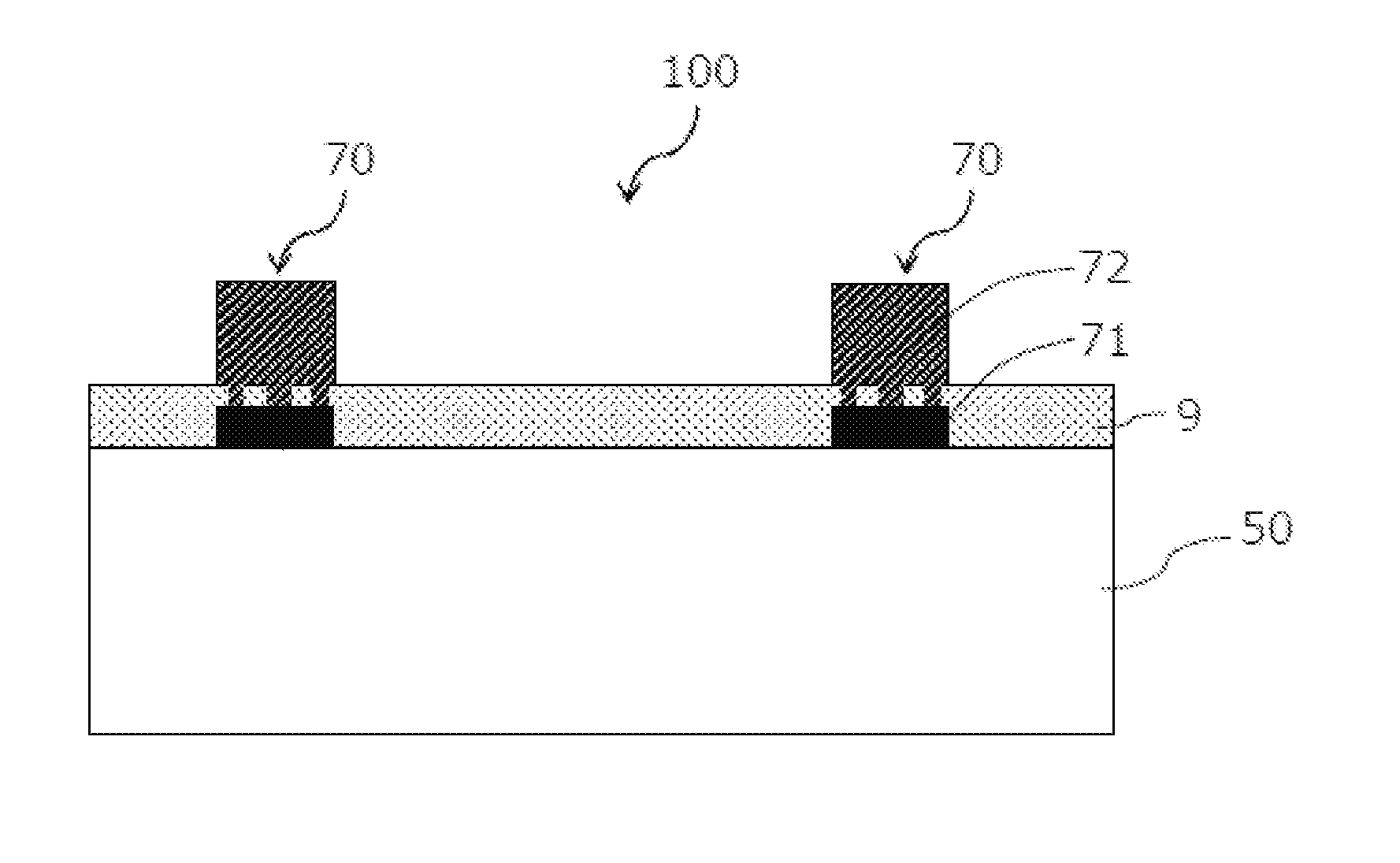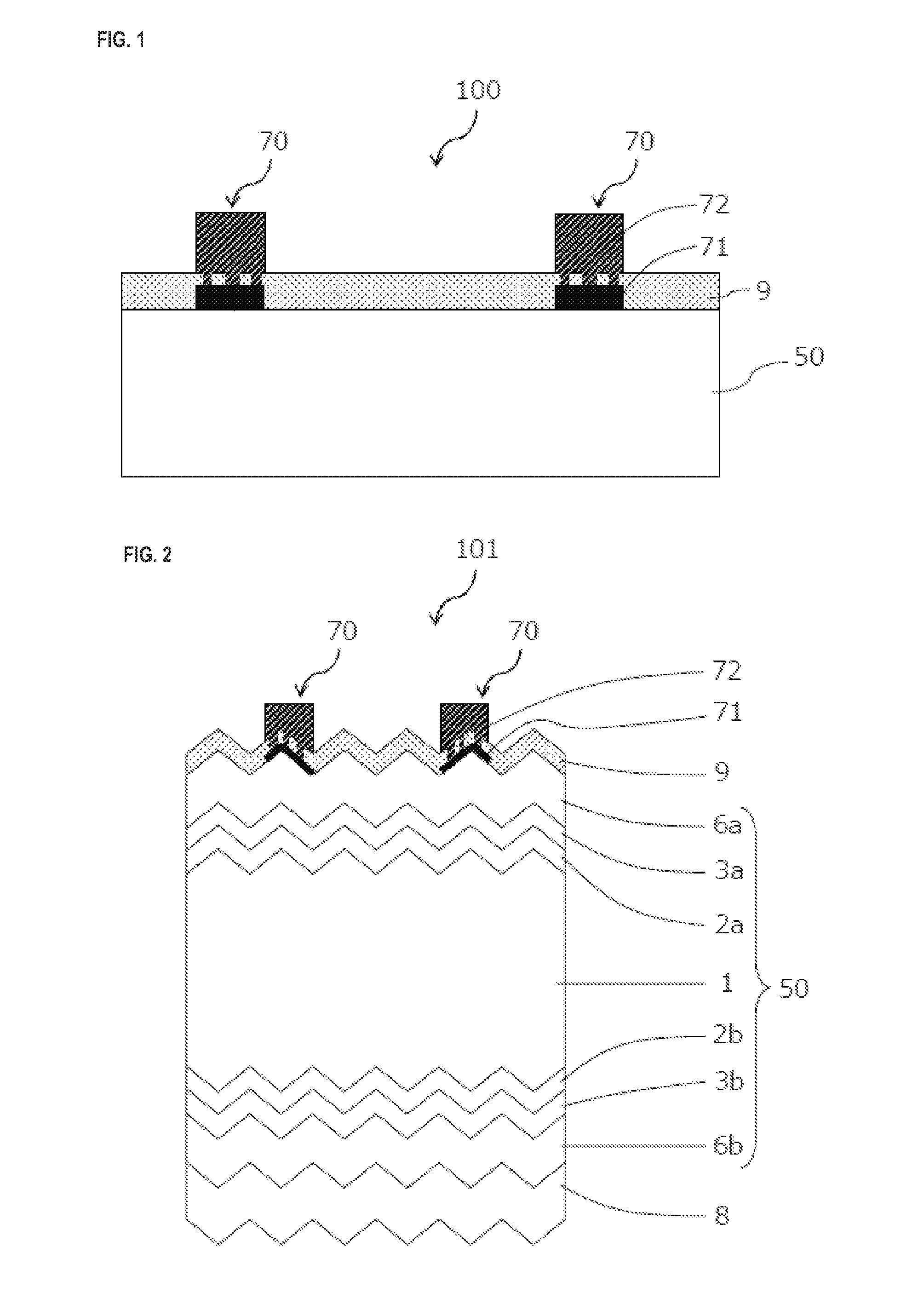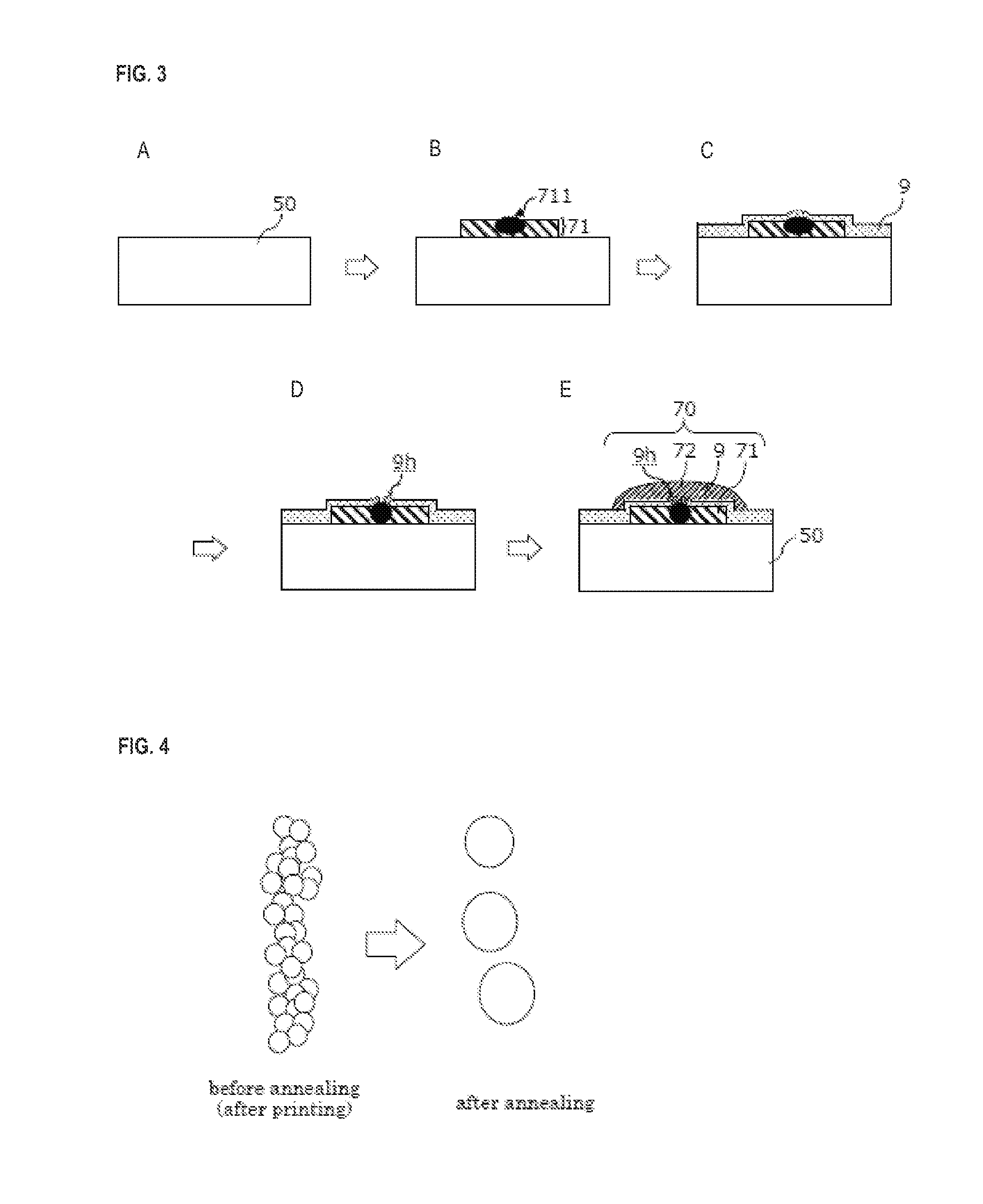Solar cell and method of manufacture thereof, and solar cell module
- Summary
- Abstract
- Description
- Claims
- Application Information
AI Technical Summary
Benefits of technology
Problems solved by technology
Method used
Image
Examples
example 1
[0136]A heterojunction solar cell of Example 1 was manufactured in the following manner.
[0137]An n-type single-crystal silicon wafer having a light incident surface direction identical to the (100) surface and having a thickness of 200 μm was provided as a single-crystal silicon substrate of a first conductivity type. The silicon wafer was immersed in a 2 wt % aqueous HF solution for 3 minutes to remove silicon oxide covering on the surface, and thereafter rinsed twice with ultrapure water. The silicon substrate was immersed in a 5 / 15 wt % aqueous KOH / isopropyl alcohol solution held at 70° C. for 15 minutes, and the surface of the wafer was etched to form a textured surface. Thereafter, the wafer was rinsed twice with ultrapure water. The surface of the wafer was observed using an atomic force microscope (AFM manufactured by Pacific Nanotechnology, Inc.), and it was confirmed that the surface of the wafer was mostly etched, and a pyramidal texture surface exposed at the (111) plane ...
examples 2 to 4
[0147]A heterojunction solar cell was prepared in the same manner as in Example 1 except that the ratio of a metallic material powder to a silver powder in the printing paste for forming the first electroconductive layer 71 was changed as shown in Table 1.
examples 5 and 6
[0148]A heterojunction solar cell was prepared in the same manner as in Example 1 except that the thickness of the insulating layer 9 was changed as shown in Table 1.
PUM
 Login to View More
Login to View More Abstract
Description
Claims
Application Information
 Login to View More
Login to View More - R&D
- Intellectual Property
- Life Sciences
- Materials
- Tech Scout
- Unparalleled Data Quality
- Higher Quality Content
- 60% Fewer Hallucinations
Browse by: Latest US Patents, China's latest patents, Technical Efficacy Thesaurus, Application Domain, Technology Topic, Popular Technical Reports.
© 2025 PatSnap. All rights reserved.Legal|Privacy policy|Modern Slavery Act Transparency Statement|Sitemap|About US| Contact US: help@patsnap.com



